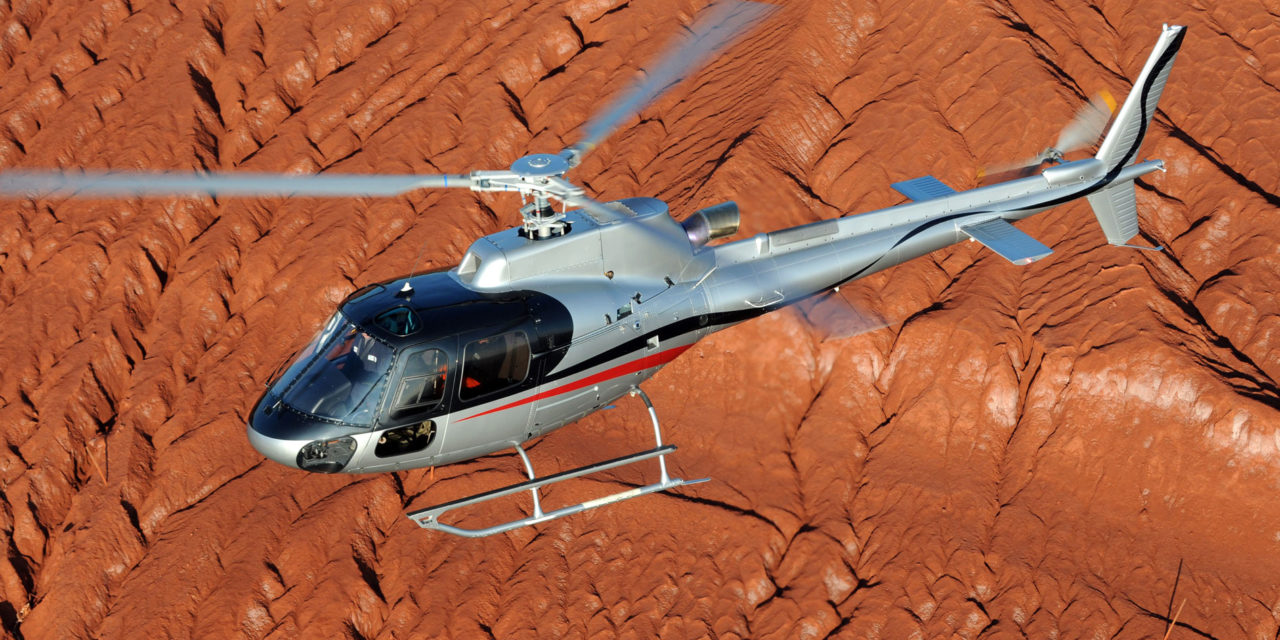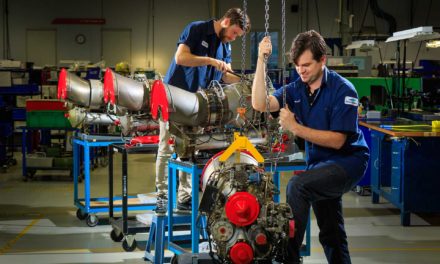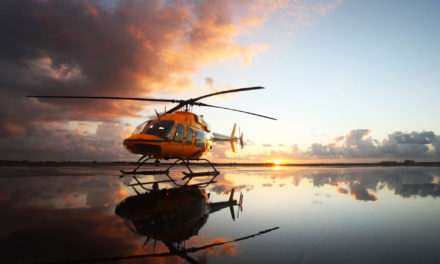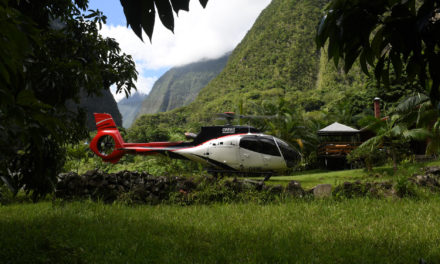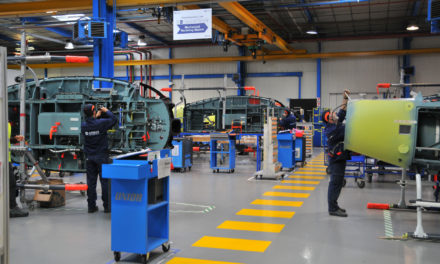After several dismal years is the end of the tunnel in sight for the civil helicopter market? The answer is clear for Airbus Helicopters: the market will continue to grow over the long term…
This wave of optimism came about from the 27% rise in civil sales (in number of aircraft ordered) recorded by Airbus Helicopters in the first half of 2017. The light models – H125, H135 and H145 – generated the bulk of sales. This upbeat figure is further supported by the overall situation of the helicopter market of over two tonnes that is up 3% from 2016, all OEM combined. While growth is modest it shows that at least the downturn reported over the past few years is finally at an end.
According to David Prevor, Airbus Helicopters marketing director, the company foresees market stability in 2017 and expects a stark recovery in 2018. Over the long term, in other words in the next 20 years, Airbus Helicopters forecasts a global market of $370 billion for turbine helicopters on the civil and parapublic market. An amount that breaks down as follows: €125 billion for aircraft and €245 billion for maintenance (including €155 billion for parts and equipment and €90 billion for customer service).
And more good news, the Franco-German helicopter manufacturer has claimed the highest spot on the podium with 56% market share on the civil and parapublic market. Airbus Helicopters performed this considerable feat over the past four years by maintaining a relatively stable sales volume despite the contracting market, falling from 782 aircraft in 2013 to 570 in 2016. Mechanically, Airbus’ market share increased from 43% to 56%. This domination however does not span across the board: performance is outstanding in the single and light twin-engine categories, where the helicopter manufacturer claims a little over two-thirds of sales for 2016. The success story also carries over to the “super medium” category, where Airbus reported 67% for the H175. However, the competition is not yet up and running in this sector. We will need to wait a few years for the numbers to come in to confirm the truth about this domination. Airbus is however nearly inexistent in the “medium” category where the Dauphin family has been pummeled by the competition. The sale and entry into service of the H160 is eagerly awaited from Airbus to restore the balance.
Airbus Helicopters bases its forecasts on the flagrant lack of equipment in certain parts of the world, namely China and India. In 2016, these two countries respectively held first and third place on the global economic podium, with the United States coming in second. In 20 years, India will have taken over second place, with the United States falling back one spot and Indonesia coming in fourth. And yet, China, India and even less so Indonesia currently appear in the top 10 countries that use helicopters. Substantial markets still remain to be tapped and satisfied, which appears to have begun with China. Long awaited, the awakening of the giant is at last underway. The Chinese fleet of civil helicopters grew 2.7x in five years. And last year with around one hundred aircraft ordered, China became the world’s top buyer. Knocking the United States from top spot!
Another reason for Airbus Helicopters’ optimism, the growth in economic and social activities associated with helicopters: police missions, medical evacuations, etc. Very few countries are currently equipped to handle these needs and considerable markets remain to be conquered. The use of helicopters in the exploitation of natural resources also remains a solid and long-term partnership. David Prevor explained for example that it takes on average one helicopter to build and maintain 80 wind turbines. And over 10,000 power-generating wind turbines will be built in the coming two decades!
Airbus Helicopters therefore assesses the needs for the coming 20 years at nearly 22,000 aircraft (see table 1), i.e. a 50% increase of the global fleet over this period (22,000 equally combines the replacement of old aircraft and market growth). While this figure is impressive, it simply follows a trend that started in 1965. In 1975, there were 5,000 aircraft in service, then 10,000 in the 1980s, 15,000 in 1995, 25,000 today and logically over 35,000 in twenty years. In total, the relative share of the best-equipped regions today will gradually decline. The United States which currently represents 35% of the global fleet will only account for 27% in twenty years. Europe will drop from 30% to 23%. These regions will “only” see growth of 14% and 17% in the coming 20 years. The most spectacular movement will come from Asia which will climb from 16% to 27% of the global fleet, with expected growth of 157% over the next twenty years.
Airbus Helicopters readily acknowledges however that these figures remain uncertain, whether related to changes in commodity prices or the irruption of drones on the vertical flight market. Less expensive to purchase and operate, drones will certainly find their niche in police or surveillance missions to the detriment of helicopters. The economic impact of this slated (r)evolution is still hard to judge. In the same vein, a portion of helicopters sold in the coming years may be OPVs. However, despite its investment in high-speed aircraft, Airbus Helicopters’ sales forecasts do not yet present this aircraft category. Too soon according to the helicopter manufacturer, which explains that it first wants to position itself in order to offer a mature technology and performance level so that potential clients can imagine new uses.
Table 1
Breakdown of sales by new aircraft family for the 2017-2037 period, all OEM combined
| Sales forecasts for 2017-2037 | % in aircraft number | % in value | |
| Single engine | 10,949 | 50% | 17% |
| Light twin engine | 5,285 | 24% | 24% |
| Medium | 2,489 | 11% | 21% |
| Super medium | 1,916 | 9% | 21% |
| Heavy | 1,243 | 6% | 17% |
Table 2
Geographic breakdown of new aircraft sales for the 2017-2037 period, all OEM combined
| Market in number of helicopters for 2017-2037 | % in quantity | |
| USA Canada | 4,749 | 22% |
| Latin America | 3,082 | 14% |
| Europe | 3,942 | 18% |
| Africa and Middle East | 2,492 | 11% |
| Asia Pacific | 7,617 | 35% |
By Frederic Lert

